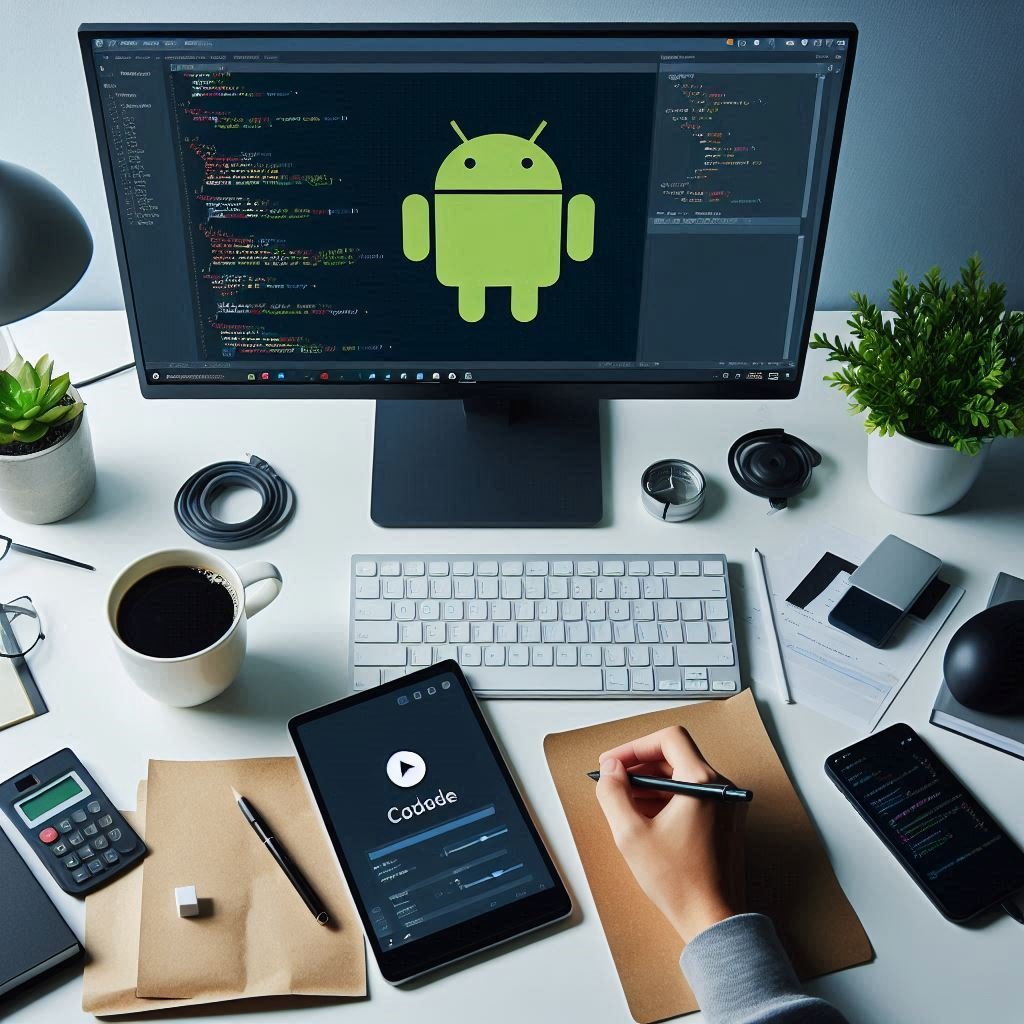
Understanding ListView in Android App Development (Java)
In Android development, ListView is a fundamental UI component that displays a scrollable list of items. It’s commonly used when displaying a large number of similar items, such as contacts, messages, or notifications. This article will guide you through the basics of using ListView in Android with Java, covering its setup, customization, and common use cases.
1. What is ListView?
ListView is a ViewGroup in Android that displays a vertically scrollable list of items. Each item in the list is represented by a separate View, and ListView manages their layout and display. It’s one of the earliest and most widely used components in Android due to its simplicity and efficiency.
2. Key Characteristics of ListView
- Vertical Scrolling:
ListViewis optimized for vertical scrolling, making it perfect for long lists where users can scroll to view more items. - Adapter-Based:
ListViewworks with adapters, which act as bridges between the data and the view, converting each data item into a view that theListViewcan display. - Efficient Recycling Mechanism:
ListViewuses a recycling mechanism to reuse off-screen items, improving memory usage and performance.
3. Setting Up ListView
To use ListView, start by defining it in the XML layout file, and then populate it with data in Java code.
XML Layout for ListView
Here’s an example layout with a ListView component:
<!-- res/layout/activity_main.xml -->
<LinearLayout xmlns:android="http://schemas.android.com/apk/res/android"
android:layout_width="match_parent"
android:layout_height="match_parent"
android:orientation="vertical">
<ListView
android:id="@+id/listView"
android:layout_width="match_parent"
android:layout_height="match_parent"/>
</LinearLayout>In this layout, the ListView component occupies the entire screen.
4. Implementing ListView with ArrayAdapter
To display items in a ListView, an adapter is required to bind data to it. The ArrayAdapter class is commonly used for this purpose, especially when displaying a simple list of items like strings or integers.
Step 1: Create a Simple Array List
In your main Java file, create a list of items you’d like to display:
// MainActivity.java
import android.os.Bundle;
import android.widget.ArrayAdapter;
import android.widget.ListView;
import androidx.appcompat.app.AppCompatActivity;
public class MainActivity extends AppCompatActivity {
@Override
protected void onCreate(Bundle savedInstanceState) {
super.onCreate(savedInstanceState);
setContentView(R.layout.activity_main);
// Create a sample list of items
String[] items = {"Item 1", "Item 2", "Item 3", "Item 4", "Item 5"};
// Find the ListView by its ID
ListView listView = findViewById(R.id.listView);
// Create an ArrayAdapter
ArrayAdapter<String> adapter = new ArrayAdapter<>(this,
android.R.layout.simple_list_item_1, items);
// Attach the adapter to the ListView
listView.setAdapter(adapter);
}
}In this example, we create a ListView, set up an ArrayAdapter to convert the array of strings into views, and set the adapter to the ListView. The simple_list_item_1 layout is a built-in Android layout that displays a single text item, making it perfect for basic lists.
5. Customizing ListView with Custom Adapter
If you need a more complex layout for each list item, you can create a custom adapter by extending BaseAdapter or ArrayAdapter. Let’s create a custom layout for each item and bind it to the ListView.
Step 1: Create a Custom Layout
Create a new XML layout for each item in the list (e.g., list_item.xml):
<!-- res/layout/list_item.xml -->
<LinearLayout xmlns:android="http://schemas.android.com/apk/res/android"
android:layout_width="match_parent"
android:layout_height="wrap_content"
android:orientation="horizontal"
android:padding="16dp">
<TextView
android:id="@+id/item_text"
android:layout_width="0dp"
android:layout_height="wrap_content"
android:layout_weight="1"
android:textSize="18sp"/>
</LinearLayout>Step 2: Create a Custom Adapter Class
Next, create a custom adapter class that extends ArrayAdapter and overrides the getView method to set up each item’s view:
// CustomAdapter.java
import android.content.Context;
import android.view.LayoutInflater;
import android.view.View;
import android.view.ViewGroup;
import android.widget.ArrayAdapter;
import android.widget.TextView;
import java.util.List;
public class CustomAdapter extends ArrayAdapter<String> {
public CustomAdapter(Context context, List<String> items) {
super(context, 0, items);
}
@Override
public View getView(int position, View convertView, ViewGroup parent) {
// Check if an existing view is being reused, otherwise inflate the view
if (convertView == null) {
convertView = LayoutInflater.from(getContext()).inflate(R.layout.list_item, parent, false);
}
// Get the data item for this position
String item = getItem(position);
// Lookup view for data population
TextView itemText = convertView.findViewById(R.id.item_text);
itemText.setText(item);
// Return the completed view to render on screen
return convertView;
}
}In this adapter, we use getView to customize each item in the list based on the layout defined in list_item.xml. This allows for a highly customized list with more control over the design of each item.
Step 3: Use the Custom Adapter
Finally, use the custom adapter in your MainActivity to set up the ListView:
// MainActivity.java
import android.os.Bundle;
import androidx.appcompat.app.AppCompatActivity;
import java.util.ArrayList;
import java.util.Arrays;
import java.util.List;
public class MainActivity extends AppCompatActivity {
@Override
protected void onCreate(Bundle savedInstanceState) {
super.onCreate(savedInstanceState);
setContentView(R.layout.activity_main);
// Create a sample list of items
List<String> items = new ArrayList<>(Arrays.asList("Item A", "Item B", "Item C", "Item D", "Item E"));
// Find the ListView and set the custom adapter
ListView listView = findViewById(R.id.listView);
CustomAdapter adapter = new CustomAdapter(this, items);
listView.setAdapter(adapter);
}
}6. Handling Item Clicks in ListView
You can add an OnItemClickListener to handle clicks on individual list items:
listView.setOnItemClickListener((parent, view, position, id) -> {
String selectedItem = adapter.getItem(position);
Toast.makeText(MainActivity.this, "Clicked: " + selectedItem, Toast.LENGTH_SHORT).show();
});This code displays a toast message showing the clicked item’s name, but you can also use it to trigger other actions, such as opening a new activity.
7. Best Practices with ListView
- Use Recycling Views Carefully: Recycle views effectively to optimize performance. Avoid creating new views unnecessarily within the
getViewmethod. - Consider Using RecyclerView: While
ListViewis still useful,RecyclerViewis a more flexible and efficient alternative for complex lists. - Optimize Custom Layouts: Keep list item layouts simple and avoid unnecessary nested views to improve rendering performance.
Conclusion
ListView is a simple yet powerful UI component in Android for displaying lists of items. While RecyclerView has become the go-to option for advanced use cases, ListView is still effective for straightforward lists, particularly when using Java. By following this guide, you should now be able to implement and customize ListView to create engaging and efficient list displays in your Android apps.


